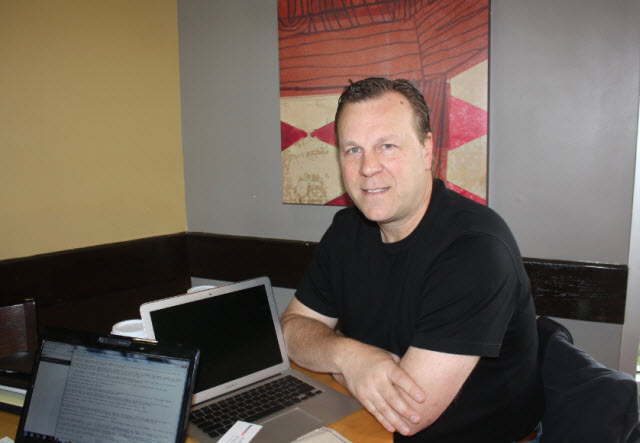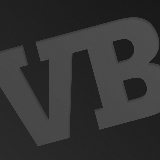
With this new kind of virtual management, MokaFive delivers a bunch of benefits. First, it cuts the cost of corporate computing while giving users access to beefy desktops or laptops. It lets workers use Macs in the enterprise. It lets administrators update desktops and laptops with a simple process. Users can bring their own computers to work and get the protection of corporate security. It enables easy migration to new software, easy backup, and remote tracking. And finally, it makes it easy to provision a contractor with access to corporate data in a secure way.
[aditude-amp id="flyingcarpet" targeting='{"env":"staging","page_type":"article","post_id":324654,"post_type":"story","post_chan":"none","tags":null,"ai":false,"category":"none","all_categories":"business,cloud,enterprise,","session":"D"}']“We preserve choice for the user without the hassle and expense of other solutions,” said Dale Fuller (pictured above), chief executive of MokaFive, in an interview. “The administrator can manage a fleet of computers in the cloud, lock them down in a secure way, and execute applications locally.”
That may sound like the best of all worlds, but it’s one of the benefits of a shift toward solutions that take advantage of both cloud computing and virtualization, which in the case of MokaFive comes in the form of a software layer known as a hypervisor. That allows a computer to run multiple operating systems on one machine.
AI Weekly
The must-read newsletter for AI and Big Data industry written by Khari Johnson, Kyle Wiggers, and Seth Colaner.
Included with VentureBeat Insider and VentureBeat VIP memberships.
A MokaFive machine starts with an operating system layer. Then it has a read-only enterprise layer, installed at boot time. Then there is a layer of applications, personalized bookmarks, and finally the layer of the user’s data.
Server-based VDI can cost about $800,000 for 1,000 users, consume about 20 terabytes of centralized data storage, and fully occupy 12 servers. With MokaFive, the system uses 5 gigabytes of data on the user’s machine but is otherwise invisible to the user. It costs only $7,300 for 1,000 users and occupies one server. The MokaFive solution pays for itself in one month, compared to 18 months for VDI.
MokaFive says it cuts the total cost of owning a desktop by 45 percent and cuts helpdesk costs by 60 percent while requiring 90 percent less infrastructure than VDI.
The operating expense is about a third of the VDI solution ($500,000 for MokaFive compared to $1.4 million for a VDI option), which may come from rivals such as Citrix and VMware. And if the software has to be updated on a fleet of PCs, administrators merely update the “golden image,” or a single centralized version rather than having to manually update thousands of PCs.
The Mac benefit also lowers costs, as Mac users often require a whole separate infrastructure. One of MokaFive’s first customers was Electronic Arts because its chief financial officer, Eric Brown, wanted to use his Mac laptop to run the company’s enterprise applications. In that sense, MokaFive is strategic for helping Apple’s Macs finally penetrate the corporate computing market. Fuller thinks the window is open for Apple to sell millions of machines into the enterprise.
[aditude-amp id="medium1" targeting='{"env":"staging","page_type":"article","post_id":324654,"post_type":"story","post_chan":"none","tags":null,"ai":false,"category":"none","all_categories":"business,cloud,enterprise,","session":"D"}']
“This is resonating far and wide,” he said.
At the Silicon Valley law firm Wilson Sonsini Goodrich & Rosati, about 60 percent of the lawyers now use Macs, thanks to MokaFive. Two years ago they were an all-Windows shop.
With MokaFive’s bring-your-own-computer strategy, users get data backup and built-in security. That security includes an antivirus scan and AES-256 encryption and the ability to revoke access for a machine if it is lost or stolen. If you’re hit with malware, you can reboot and get rid of it.
These user-owned PCs can operate much faster than web-connected thin clients, which don’t have much local computing power.
[aditude-amp id="medium2" targeting='{"env":"staging","page_type":"article","post_id":324654,"post_type":"story","post_chan":"none","tags":null,"ai":false,"category":"none","all_categories":"business,cloud,enterprise,","session":"D"}']
MokaFive customers include Dupont, Goldman Sachs, BP and Electronic Arts.
MokaFive was founded in 2006 by a group of graduates from Stanford University’s virtual machine group. Fuller funded the startup and then became the CEO. The company worked with large customers at the end of 2009 on a test version and then shipped an official version in mid-2010.
MokaFive supports all hypervisors such as Parallels or VMware. It charges $150 per user per year. The software is in version 3.5 now and also has a version called Bare Metal that replaces the operating system on the computer. The company has raised $38 million in three rounds to date from Fuller, Vinod Khosla, Highland Capital, Khosla Ventures, and NGEN. Rivals include Citrix, VMware, Virtual Computer and Wanova.
VentureBeat's mission is to be a digital town square for technical decision-makers to gain knowledge about transformative enterprise technology and transact. Learn More
